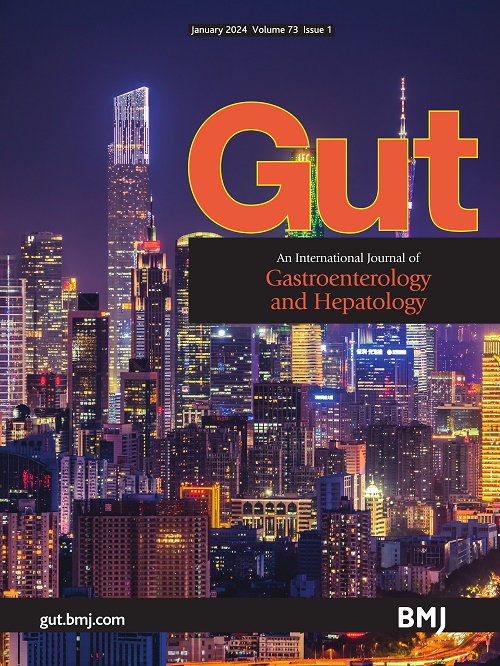Gut feeling: extracellular vesicles dictate liver’s susceptibility to colorectal cancer metastasis
IF 25.8
1区 医学
Q1 GASTROENTEROLOGY & HEPATOLOGY
引用次数: 0
Abstract
Colorectal cancer (CRC) represents a major global health issue, ranking as the third most common tumour and the second leading cause of cancer-related mortality worldwide.1 Distant metastasis is the primary cause of fatality for patients with cancer. CRC often presents as metastatic disease at diagnosis, and up to 70% of patients who undergo curative surgery of the primary tumour will eventually develop metastases. The liver is the most common site for CRC metastatic spread. Despite significant progress in surgical interventions and treatments, a large number of patients with CRC have inoperable liver metastases or experience recurrence after surgery. To develop new therapeutic strategies and improve the management of advanced CRC, a deep understanding of the metastatic process is of utmost importance. In recent decades, we have learnt that the tumour microenvironment (TME) plays a central role in every phase of oncogenesis and tumour development. The reciprocal and dynamic communication between cancer cells and resident cells, via both paracrine and physical interactions, determines the clinical behaviour of cancer and can affect patients’ response to therapy to a similar extent as the mutational burden leading to oncogenic pathway activation. The liver stands out as a unique and complex microenvironment, distinctly characterised by its tolerogenic nature. This prevents undesirable and excessive immune responses to the high volume of harmless antigens conveyed …肠道感觉:细胞外囊泡决定肝脏对结直肠癌转移的易感性
结直肠癌(CRC)是一个重大的全球健康问题,是全球第三大常见肿瘤和第二大癌症相关死亡原因远处转移是癌症患者死亡的主要原因。结直肠癌在诊断时通常表现为转移性疾病,高达70%的接受原发肿瘤手术治疗的患者最终会发生转移。肝脏是结直肠癌转移扩散最常见的部位。尽管手术干预和治疗取得了重大进展,但大量结直肠癌患者存在无法手术的肝转移或术后复发。为了开发新的治疗策略和改善晚期结直肠癌的管理,深入了解转移过程是至关重要的。近几十年来,我们已经了解到肿瘤微环境(TME)在肿瘤发生和肿瘤发展的每个阶段都起着核心作用。癌细胞和常驻细胞之间通过旁分泌和物理相互作用的相互作用和动态交流,决定了癌症的临床行为,并可以影响患者对治疗的反应,其程度与导致致癌途径激活的突变负担相似。肝脏是一个独特而复杂的微环境,其耐受性是其独特的特征。这可以防止对大量无害抗原的不良和过度的免疫反应。
本文章由计算机程序翻译,如有差异,请以英文原文为准。
求助全文
约1分钟内获得全文
求助全文
来源期刊

Gut
医学-胃肠肝病学
CiteScore
45.70
自引率
2.40%
发文量
284
审稿时长
1.5 months
期刊介绍:
Gut is a renowned international journal specializing in gastroenterology and hepatology, known for its high-quality clinical research covering the alimentary tract, liver, biliary tree, and pancreas. It offers authoritative and current coverage across all aspects of gastroenterology and hepatology, featuring articles on emerging disease mechanisms and innovative diagnostic and therapeutic approaches authored by leading experts.
As the flagship journal of BMJ's gastroenterology portfolio, Gut is accompanied by two companion journals: Frontline Gastroenterology, focusing on education and practice-oriented papers, and BMJ Open Gastroenterology for open access original research.
 求助内容:
求助内容: 应助结果提醒方式:
应助结果提醒方式:


